Reading Time: 5 minutesSometimes called stickbaits, jerkbaits are favorite lures for anglers all around the world. The clue should be in the name - they’re designed for use when jerking. That means shaking the rod so that the lure shakes in an unpredictable manner, enticing predators that think it’s an injured or distressed bait fish.
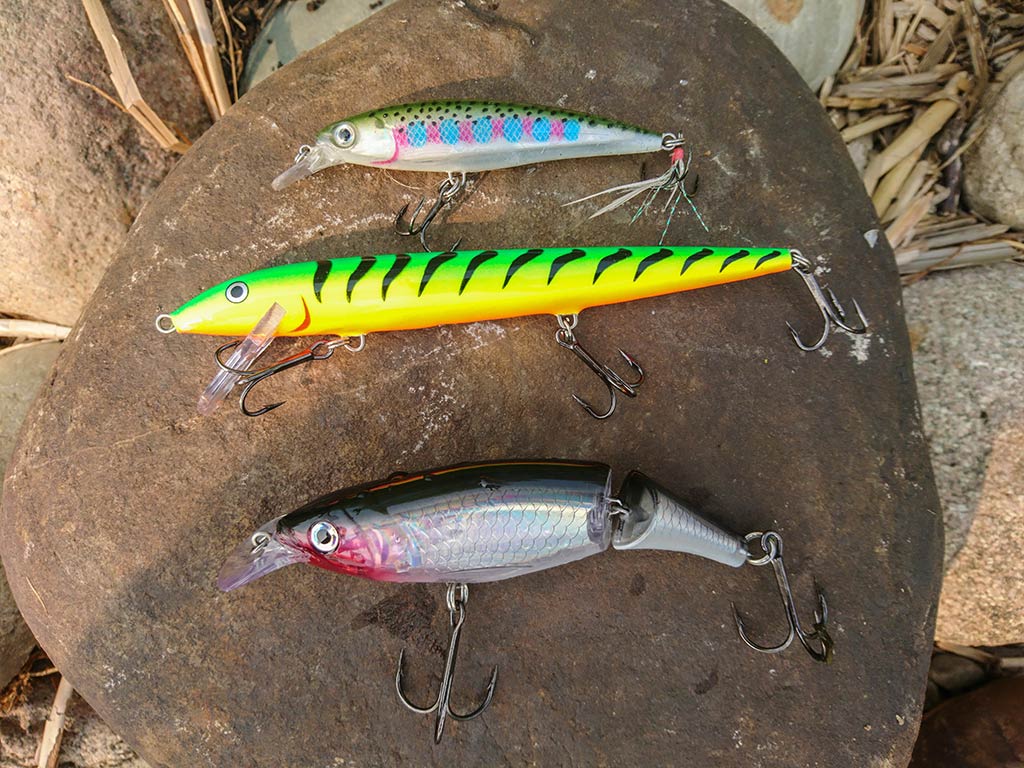
But before you delve into the world of jerkbait fishing, there’s plenty to learn. From finding out exactly what one is to learning about the different types, all the way through working out how to rig them… In this guide, I’ll walk you through the ins and outs of all things jerkbaits. Let’s get started!
What is a jerkbait?
Jerkbaits are lures that consist of a long body profile with a narrow taper. These help them swim and wobble, drawing the attention of fish. Like crankbaits, jerkbaits use a lip to dive and impart action on the lure. Lipless options are also available for fishing the surface or for custom rigging with detached weights.
Many brands like the trusted Rapala make jerkbait-style lures. You’ll find them for both freshwater and saltwater, and these lures can catch pretty much anything that swims! Every angler who casts or trolls should have a few jerkbaits in their tackle box.
Why are jerkbaits so popular?
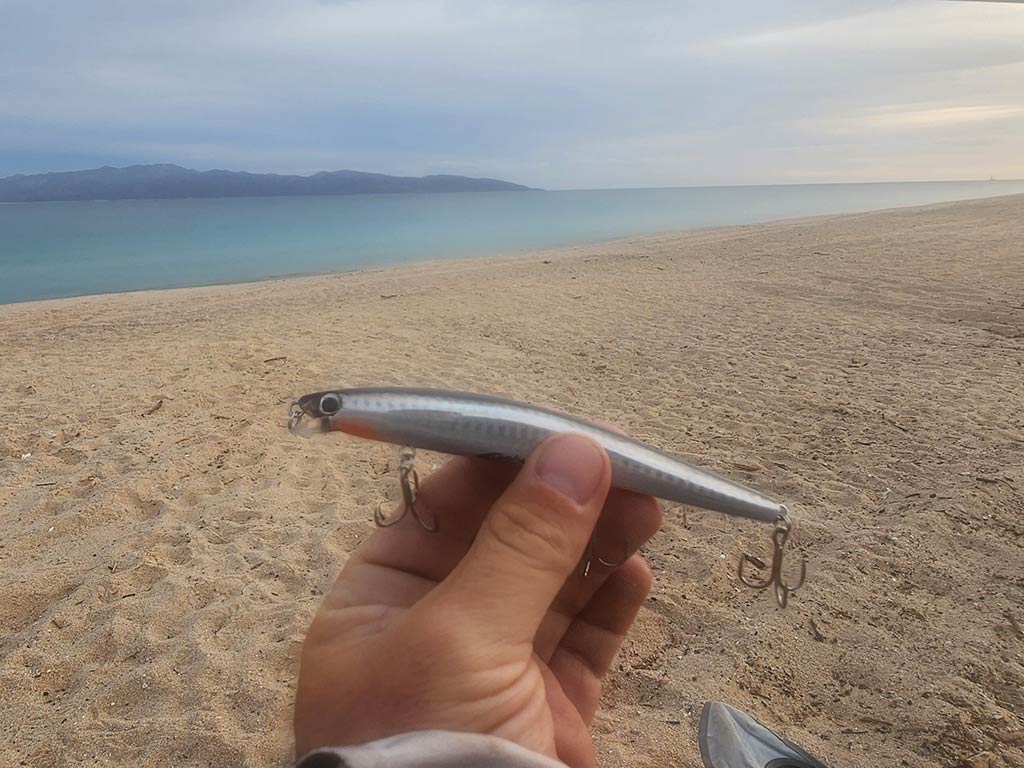
Photo courtesy of Zach LazzariThe jerkbait is no secret style lure. There are entire walls and displays dedicated to them in fishing and outdoor stores. They aren’t cheap by a long shot but the number of trophy Trout, Pike, Bass, Muskies, Stripers, Tuna, and many more species caught on them is phenomenal.
While you can cast and retrieve or run a simple trolling setup with these lures, it’s the sensitivity to rod motion that makes them truly unique. Try casting a jerkbait into still water and just allow it to sit still for a few seconds. Then, jerk the rod tip to impart motion and watch how it swims.
It’s a good idea to play with the lures in clear water so you can see the action. Take those observations to the places you fish and use them to make a targeted and very specific presentation. It won’t take long to realize you can fish these lures slow, fast, deep, or shallow.
Different Types of Jerkbaits
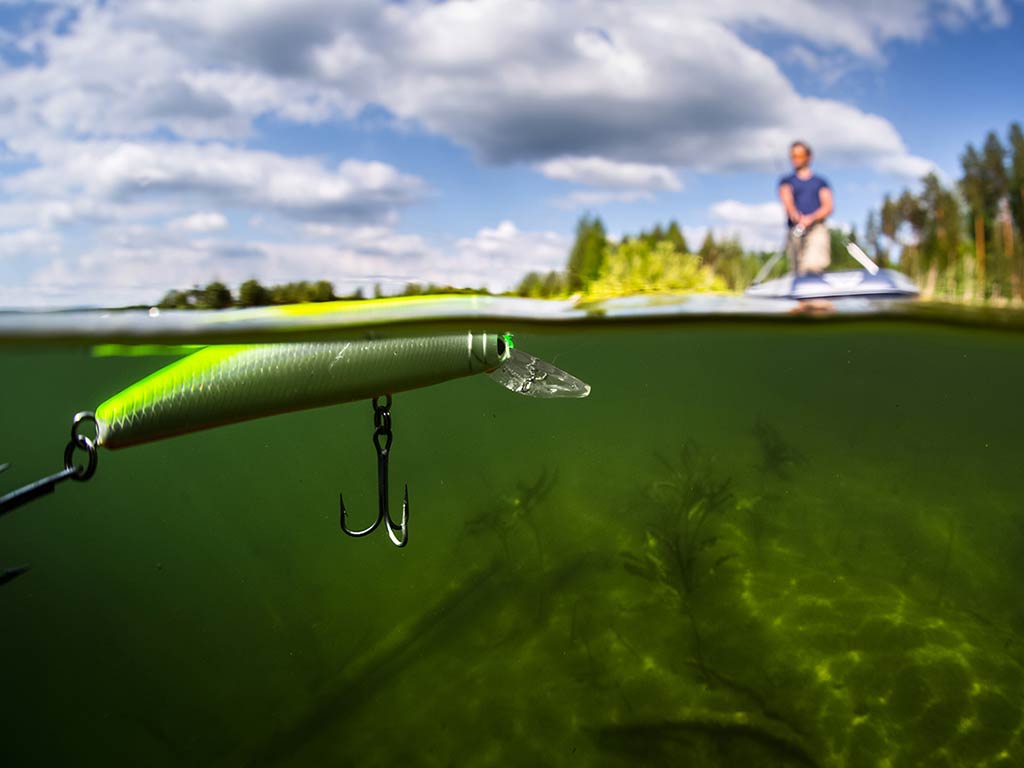
The styles available are somewhat overwhelming when shopping for your first jerkbait. Keep it simple and avoid the gimmicky stuff. Instead, choose the proven classics. As your arsenal grows, there are plenty of specialty designs, unique shapes, and different lip styles to play with. Early on, however, grab a basic Rapala and get to casting.
Here’s a selection of general jerkbaits you can try:
- Hard Body Jerkbaits. Most of the jerkbaits you’ll see on the shelf are hard options but soft models are also a thing. I think it’s best to start with the hard body designs that swim just below the surface. These have the widest range of applications as they can handle lakes and rivers while still performing in a variety of water depths.
- Soft Jerkbaits. These are essentially soft plastics in a similar shape to a hard jerkbait. You can rig them light, heavy, or however you want. The action won’t be exactly the same, though, as the shape profile is malleable and has less water displacement. The tradeoff is a very realistic swimming lure that’s very effective.
- Suspended Lures. In the realm of hard jerkbaits, these are often designed to suspend or dive to various depths. Suspending models will actually hit a specific depth where they stop diving thanks to the lip design. This is very useful when the fish are also suspended somewhere between that depth and the surface, and you can make small movements while staying in the zone. While these aren’t as great for general searching, you’ll be very effective at exact depths.
- Diving Models. You can opt for a flat jerkbait that stays near the surface or choose a deeper diving model to get down. Trolling and fishing through heavy currents is difficult with shallow versions as they can’t break through the currents. Go for a deep diving model to get down and stay down in the zone.
Tips for Rigging and Fishing Jerkbaits
Rigging jerkbaits is very simple, as there are numerous variations suited to each environment. For small lures, tie directly to the hook with monofilament, fluorocarbon, or braided lines. A Palomar or clinch knot will do the trick for Trout, Bass, and most small to midsize freshwater fish.
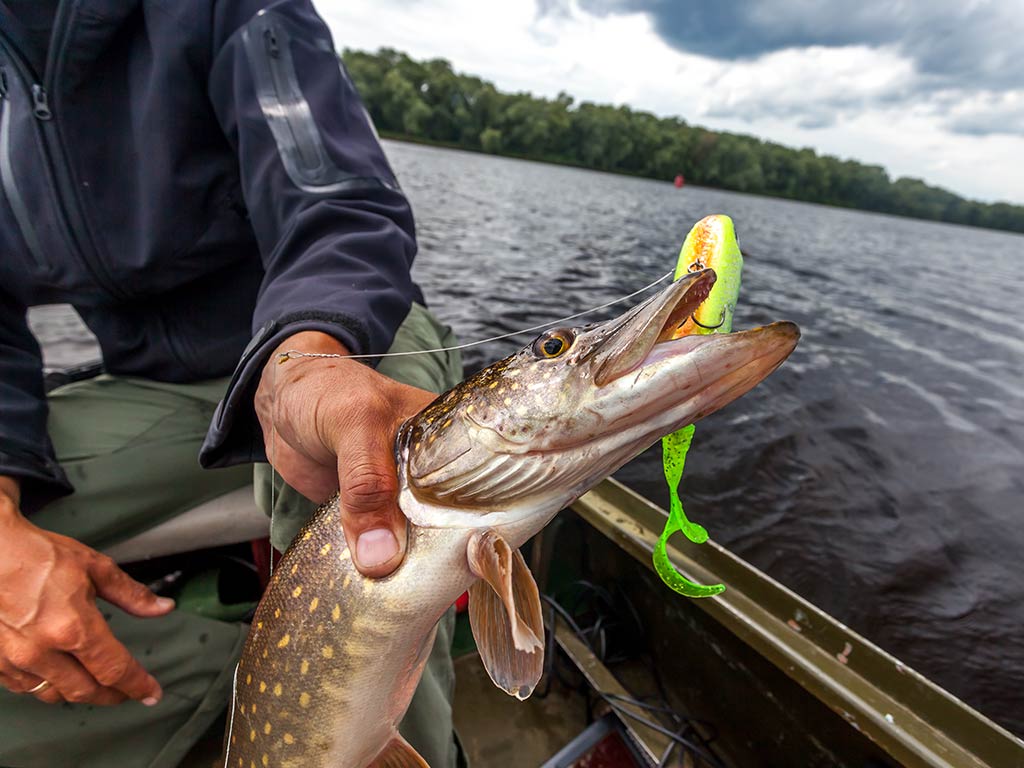
For Pike and other sharp-toothed species, rig a steel leader to a barrel swivel and add a clip for your lure. Some leaders are sold pre-rigged in this exact fashion and they work great. Softer steel leaders are nice, too, and they turn over easily when casting.
In saltwater environments or for bigger freshwater fish, consider a heavy monofilament leader tied to a barrel swivel and again to a clip. Use a San Diego jammer knot to create a strong connection that won’t slip.
After making secure connections, it’s time to plan your approach. Trolling is fantastic in lakes and oceans, especially when using deep diving techniques. You can also backtroll in rivers by holding a boat even with the current speed while your lure works in the current.
My personal favorite way to fish a jerkbait is by casting and retrieving. I fish them in the ocean with surface-riding models that barely dive. They attract aggressive strikes from Jack Crevalle, Roosterfish, and plenty of other species. The same applies to Trout fishing in a river - although a slightly deeper diving model that stays a few feet below the surface performs very well.
Are you ready to test the waters with a jerkbait?
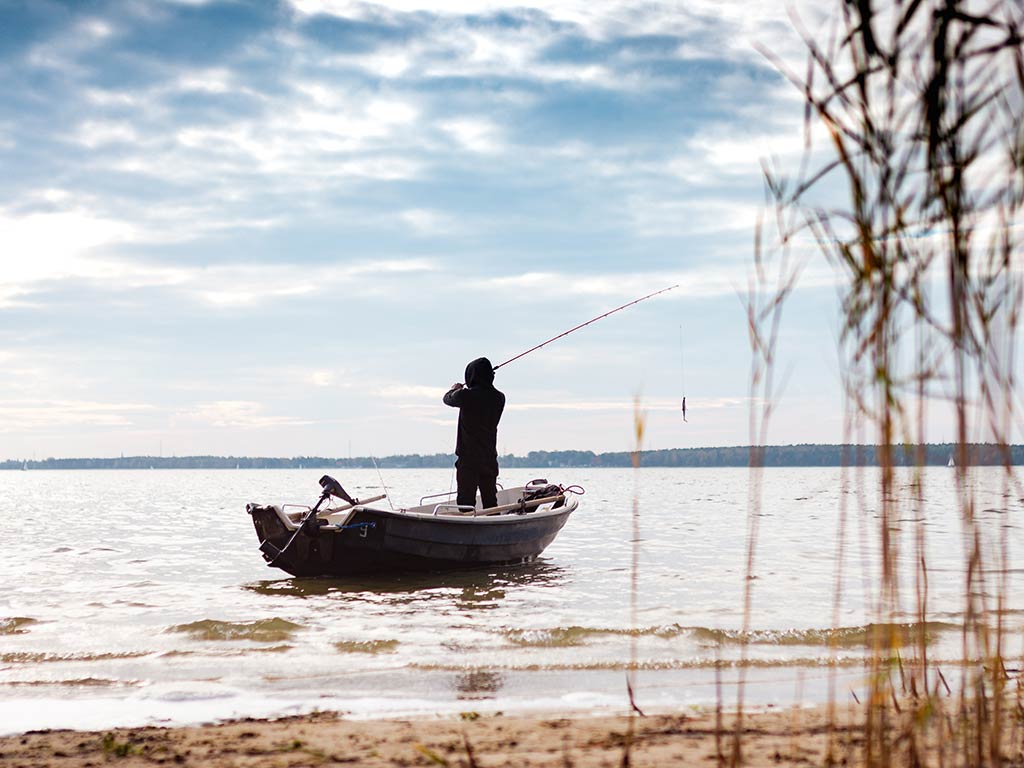
Not many lures will elicit such aggressive strikes while also offering light touch control over the action. While you can catch the same species with spoons, spinners, soft plastics, crankbaits, and live baits, after trying a jerkbait, you’re sure to add it to your tackle box. It’s time to get out there and test your skills!
Are you a regular jerkbaits fisher? We’d love to hear about your favorite models and the species you target! Chime in to share your strategies.
The post Jerkbaits: Everything You Need to Know for 2024 appeared first on FishingBooker Blog.
https://fishingbooker.com/blog/jerkbaits/
 CampingSurvivalistHuntingFishingExploringHikingPrivacy PolicyTerms And Conditions
CampingSurvivalistHuntingFishingExploringHikingPrivacy PolicyTerms And Conditions
